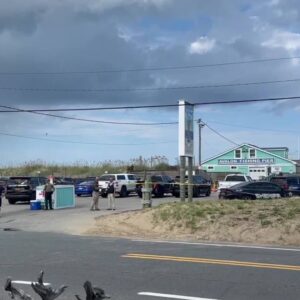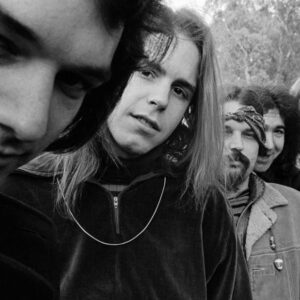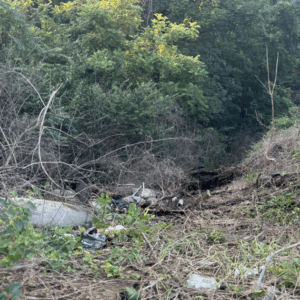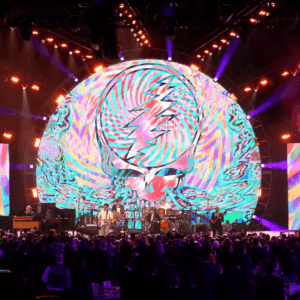On stage at the Blue Moon Saloon, with the gleam of a recent rain still slicking the cement walkways and wooden planks outside, musicians sit down and begin tuning their instruments for the weekly Cajun Jam.
One is Craig Guillory, who’s played music since he was a child and spent some years as a touring musician, performing traditional Cajun music across the country. Originally a bass player, he recently picked up the fiddle, which he now practices alongside the other musicians on stage.
“Your art gets better,” he says. “You feed off of other people’s vibrations.”
For non-musical artists, this kind of collaboration can be difficult to find. But that hasn’t stopped them from trying.
The latest collective to step into this role is ARCHIVES, a group co-founded by local artists Emma Sonnier and Lex Thomas in an effort to support emerging artists by providing opportunities for collaboration, exhibition and professional development.
“My initial inspirations for this project was probably more formal résumé experience, building opportunities for artists in the area who maybe haven’t found a larger audience yet,” Sonnier says. Another goal, she adds, is “to give those people a place to not only showcase their work, but to network and meet each other and form those collaborative partnerships and networks that are really crucial.”
Many young artists struggle to find community outside of a campus setting, Thomas says. “It feels like the rug is pulled out from underneath you.” Once stripped of that formal setting, artists often stop making art altogether.

Artists in Lafayette have long sought each other’s support, critique and advice.
Jaik Faulk, visual arts director with the Acadiana Center for the Arts and Sonnier’s former boss, sees ARCHIVES as continuing a rich tradition of art collectives in Lafayette that has gone largely undocumented.
“As a visual artist working in a studio, it’s a very common thing to feel a bit of isolation. There’s no sounding board,” says Faulk. “You have to, in some way, break out of the studio and connect on some other level. And I think that’s the need that it feeds.”
While a student at UL Lafayette, Faulk took note of the work of the Artists Alliance, a group of artists that banded together in the mid-1980s and created a Downtown studio at the hardware store soon to become the Louisiana Music Museum. Many of Acadiana’s best-known artists, including Francis X. Pavy and muralist Robert Dafford, whose work adorns walls all around town, were members of the collective.
When Faulk returned after more than a decade on the West Coast, that group had disbanded, and it would take a few years for a new collaborative to take its place. After the pandemic, the more installation-focused Loudhouse spun up and now, as of 2024, the visually-driven ARCHIVES emerged. At times, the collectives have partnered with each other.
Although famously a profession in which few feast and many starve, economic pressures are weighing especially heavy on this generation of emerging artists, Sonnier notes.
“It’s more expensive to get supplies, it’s harder to get a studio space,” Sonnier says. “It’s just a more consistent barrier, for people who are very young or even more established artists.” Unlike its predecessors, ARCHIVES does not have a permanent space, with Sonnier and Thomas using spaces for their events as they become available.

Local artist Anna Teer experienced those economic pressures first-hand, working at a local fast-food restaurant for a year after graduating with an animation degree from UL. Being able to showcase and find opportunities for paid work is crucial, she says, and something she credits ARCHIVES with doing especially well.
“People deserve the opportunity to be creative and be compensated for it,” Teer says. While she finds opportunities remain scarce for working artists, ARCHIVES has helped open what doors do exist: “They’re very, very, very kind. They care about the people that they’re doing this for, and they’re working so hard to be able to give people voices and showcase their work.”
One part of that effort is ARCHIVES’ micro-grant program, which offers artists financial assistance to help cover application fees for exhibitions. “That’s one of the biggest pain points in my own practice and a lot of artists’ practices: it’s so expensive to apply to these exhibitions and you’re not guaranteed in,” Thomas explains. For their next project, they hope to create a fund for supplies, maybe even a supply library where artists can borrow certain tools they need to create.
As for creating a community, their work has already begun to bear fruit. At a recent live figure drawing event held at the AcA, where artists of all ages, mediums and experience mingled, the room abuzz with conversation, an older artist approached Thomas.
“I come to these things, and I’ve never made a friend before, but I left today having a new friend,” the woman said. “That was the best.”





